
Joshua Slocum (February 20, 1844 – on or shortly after November 14, 1909) was the first man to sail single-handedly around the world. He was a Nova Scotian born, naturalised American seaman and adventurer, and a noted writer. In 1900 he wrote a book about his journey Sailing Alone Around the World, which became an international best-seller. He disappeared in November 1909 while aboard his boat, the Spray.

Nova Scotian childhood
Joshua Slocum was born on 20 February 1844 in Mount Hanley, Annapolis County, Nova Scotia (officially recorded as Wilmot Station), a community on the North Mountain within sight of the Bay of Fundy. The fifth of eleven children of John Slocombe[1] and Sarah Jane Slocombe née Southern, Joshua descended, on his father's side, from a Quaker, known as "John the Exile" who left the United States shortly after 1780 because of his opposition to the American War for Independence.[2] Part of the Loyalist migration to Nova Scotia, the Slocombes were granted 500 acres (2.0 km2) of farmland in Nova Scotia's Annapolis County.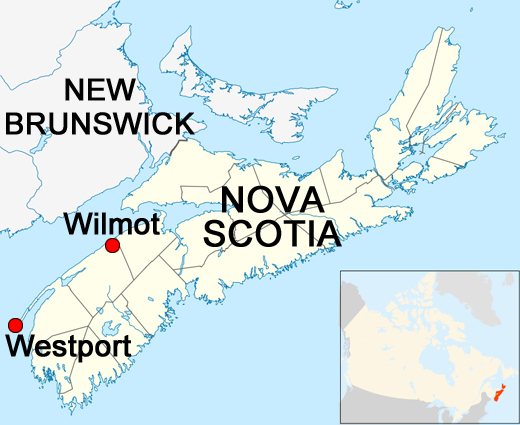
Joshua Slocum was born in the family's farm house in Mount Hanley and learned to read and write at the nearby Mount Hanley School. His earliest ventures on the water were made on coastal schooners operating out of the small ports such as Port George and Cottage Cove near Mount Hanley along the Bay of Fundy. When Joshua was eight years old, the Slocombe family moved from Mount Hanley to Brier Island in Digby County, at the mouth of the Bay of Fundy. Slocum's maternal grandfather was the keeper of the lighthouse at Southwest Point there. His father, a stern man and strict disciplinarian, took up making leather boots for the local fishermen, and Joshua helped in the shop. However, the boy found the scent of salt air much more alluring than the smell of shoe leather. He yearned for a life of adventure at sea, away from his demanding father and his increasingly chaotic life at home among so many brothers and sisters.
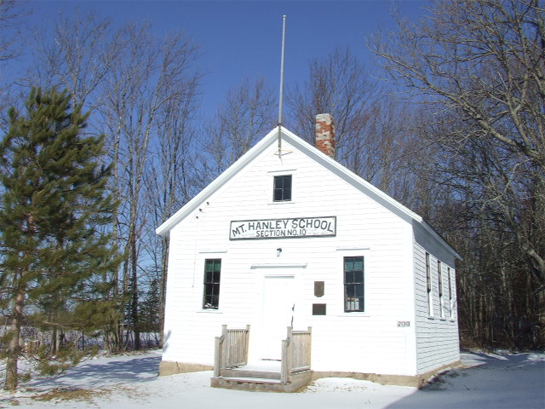
He made several attempts to run away from home, finally succeeding, at age fourteen, by hiring on as a cabin boy and cook on a fishing schooner, but he soon returned home. In 1860, after the birth of the eleventh Slocombe (Joshua changed the spelling of his last name later in his life)[3] child and the subsequent death of his kindly mother, Joshua, then sixteen, left home for good. He and a friend signed on at Halifax as ordinary seamen on a merchant ship bound for Dublin, Ireland.
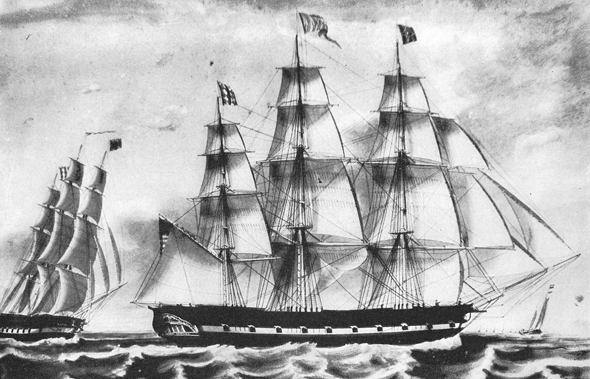
Early life at sea
From Dublin, he crossed to Liverpool to become an ordinary seaman on the British merchant ship Tangier (also recorded as Tanjore), bound for China. During two years as a seaman, he rounded Cape Horn twice, landed at Batavia (now Jakarta) in the Dutch East Indies, and visited the Moluccas, Manila, Hong Kong, Saigon, Singapore, and San Francisco. While at sea, he studied for the Board of Trade examination, and, at the age of eighteen, he received his certificate as a fully qualified Second Mate. Slocum quickly rose through the ranks to become a Chief Mate on British ships transporting coal and grain between the British Isles and San Francisco.
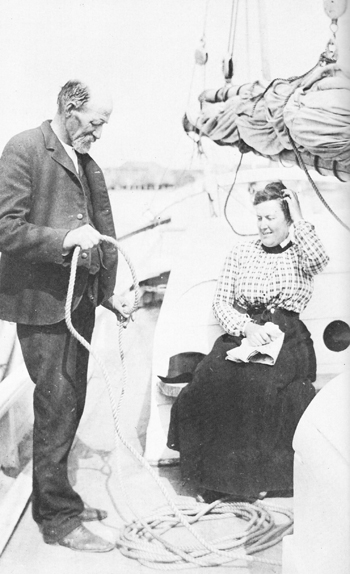
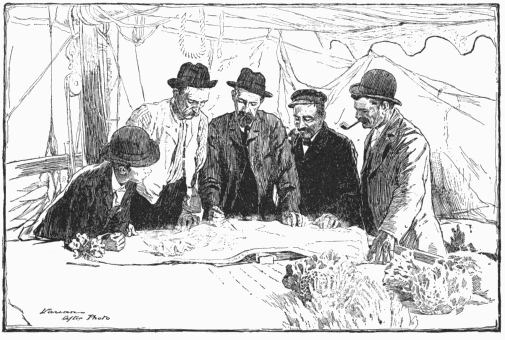
He sailed for thirteen years out of the port of San Francisco, transporting mixed cargo to China, Australia, the Spice Islands, and Japan. Between 1869 and 1889, he was the master of eight vessels, the first four of which (the Washington, the Constitution, the Benjamin Aymar and the Amethyst) he commanded in the employ of others. Later, there would be four others that he himself owned, in whole or in part.
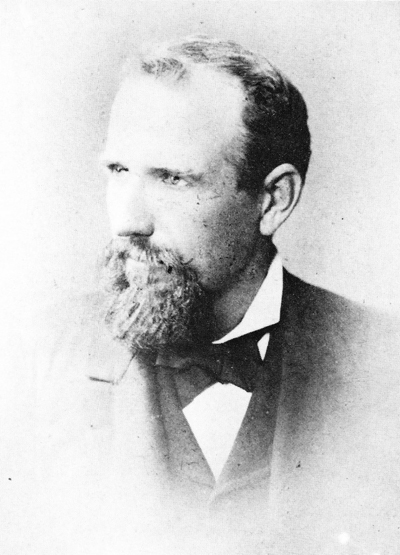
Family at sea
Shortly before Christmas 1870, Slocum and the Washington put in at Sydney, Australia. There, in about a month's time, he met, courted, and married a young woman named Virginia Albertina Walker. Their marriage took place on 31 January 1871. Miss Walker, quite coincidentally, was an American whose New York family had migrated west to California at the time of the 1849 gold rush and eventually continued on, by ship, to settle in Australia. She sailed with Slocum, and, over the next thirteen years, bore him seven children, all at sea or foreign ports. Four children, sons Victor, Benjamin Aymar, and Garfield, and daughter Jessie, survived to adulthood.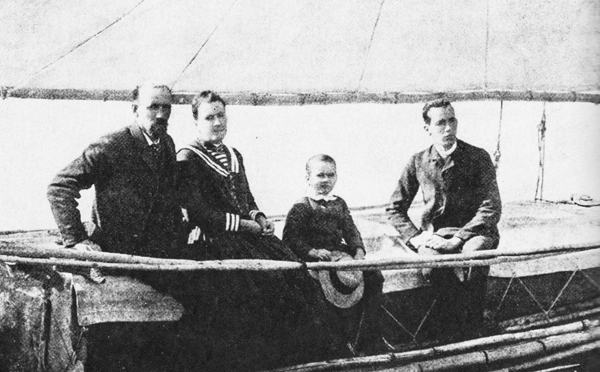
In Alaska, the Washington was wrecked when she dragged her anchor during a gale, ran ashore, and broke up. Slocum, however, at considerable risk to himself, managed to save his wife, the crew, and much of the cargo, bringing all back to port safely in the ship's open boats. The owners of the shipping company that had employed Slocum were so impressed by this feat of ingenuity and leadership, they gave him the command of the Constitution which he sailed to Hawaii and the west coast of Mexico.
His next command was the Benjamin Aymar, a merchant vessel in the South Seas trade. However, the owner, strapped for cash, sold the vessel out from under Slocum, and he and Virginia found themselves stranded in the Philippines without a ship.
The Pato
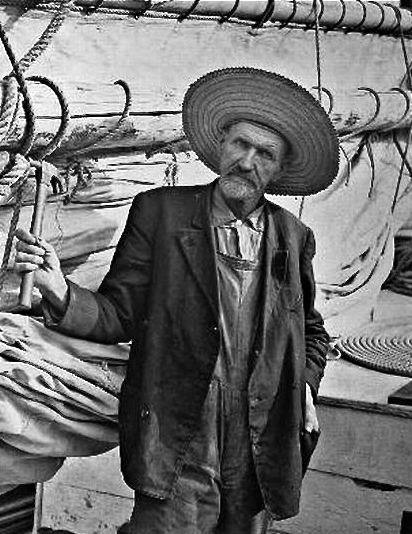
While in the Philippines, in 1874, under a commission from a British architect, Slocum organized native workers to build a 150-ton steamer in the shipyard at Subic Bay. In partial payment for the work, he was given the ninety-ton schooner, Pato, the first ship he could call his own.
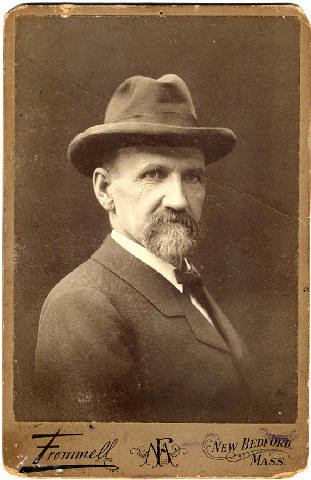
Ownership of the Pato afforded Slocum the kind of freedom and autonomy he had never experienced before. Hiring a crew, he contracted to deliver a cargo to Vancouver in British Columbia. Thereafter, he used the Pato as a general freight carrier along the west coast of North America and in voyages back and forth between San Francisco and Hawaii. During this period, Slocum also fulfilled a long-held ambition to become a writer; he became a temporary correspondent for the San Francisco Bee.


The Slocums sold the Pato in Honolulu in the spring of 1878. Returning to San Francisco, they purchased the Amethyst. He worked this ship until June 23, 1881.[4]

The Slocums next bought a third share in the Northern Light 2. This large clipper was 233 feet in length, 44 feet beam, 28 feet in the hold. It was capable of carrying 2000 tons on three decks. Although Joshua Slocum called this ship "my best command", it was a command plagued with mutinies and mechanical problems. Under troubling legal circumstances (caused by his alleged treatment of the chief mutineer) he sold his share in the Northern Light 2 in 1883.[5]
The Aquidneck
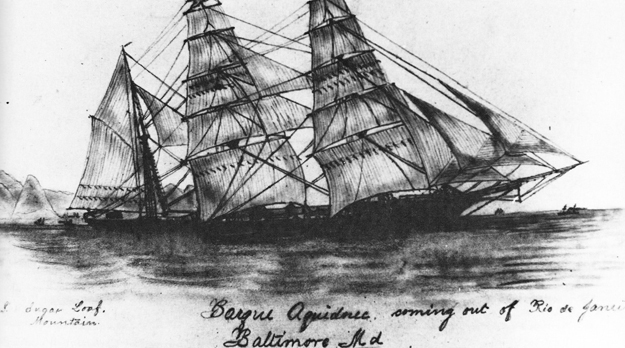
The Slocum family continued on their next ship, the 326-ton Aquidneck. In 1884, Slocum's wife Virginia became ill aboard the Aquidneck in Buenos Aires and died. After sailing to Massachusetts, Slocum left his three youngest children, Benjamin Aymar, Jessie, and Garfield in the care of his sisters; his oldest son Victor continued as his first mate.[6]

In 1886, at age 42, Slocum married his 24-year-old cousin, Henrietta "Hettie" Elliott. The Slocum family, with the exception of Jessie and Benjamin Aymar, again took to the sea aboard the Aquidneck, bound for Montevideo, Uruguay. Slocum's second wife would find life at sea much less appealing than his first. A few days into Henrietta's first voyage, the Aquidneck sailed through a hurricane. By the end of this first year, the crew had contracted cholera, and they were quarantined for six months.[7] Later, Slocum was forced to defend his ship from pirates, one of whom he shot and killed; he was tried and acquitted of murder. Next, the Aquidneck was infected with smallpox, leading to the death of three of the crew. Disinfecting of the ship was performed at considerable cost. Shortly afterward, near the end of 1887, the unlucky Aquidneck was wrecked in southern Brazil.[7][8]
The Liberdade
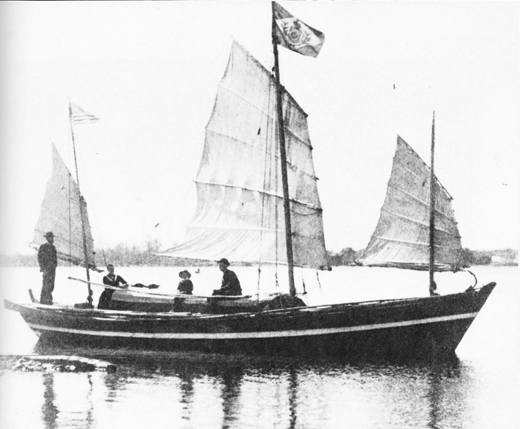
After being stranded in Brazil with his wife and sons Garfield and Victor, he started building a boat that could sail them home. He used local materials, salvaged materials from the Aquidneck and local workforce. The boat was launched on May 13, 1888, the very day slavery was abolished in Brazil, and therefore the ship was given the Portuguese name Liberdade. It was an unusual 35-foot (11 m) junk-rigged design which he described as "half Cape Ann dory and half Japanese sampan [sic] ".[8] He and his family began their voyage back to the United States, his son Victor (15) being the mate. After fifty-five days at sea and 5510 miles,[9] the Slocums reached Cape Roman, South Carolina[10] and continued inland to Washington D.C. for winter and finally reaching Boston via New York in 1889.[8] This was the last time Henrietta sailed with the family. In 1890, Slocum published the accounts of these adventures in Voyage of the Liberdade.[8][11]
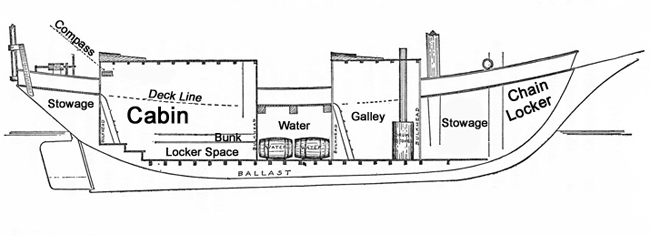
On April 24, 1895, he set sail from Boston, Massachusetts. In his famous book, Sailing Alone Around the World,[12] now considered a classic of travel literature, he described his departure in the following manner:
- "I had resolved on a voyage around the world, and as the wind on the morning of April 24, 1895 was fair, at noon I weighed anchor, set sail, and filled away from Boston, where the Spray had been moored snugly all winter. The twelve o'clock whistles were blowing just as the sloop shot ahead under full sail. A short board was made up the harbor on the port tack, then coming about she stood to seaward, with her boom well off to port, and swung past the ferries with lively heels. A photographer on the outer pier of East Boston got a picture of her as she swept by, her flag at the peak throwing her folds clear. A thrilling pulse beat high in me. My step was light on deck in the crisp air. I felt there could be no turning back, and that I was engaging in an adventure the meaning of which I thoroughly understood."
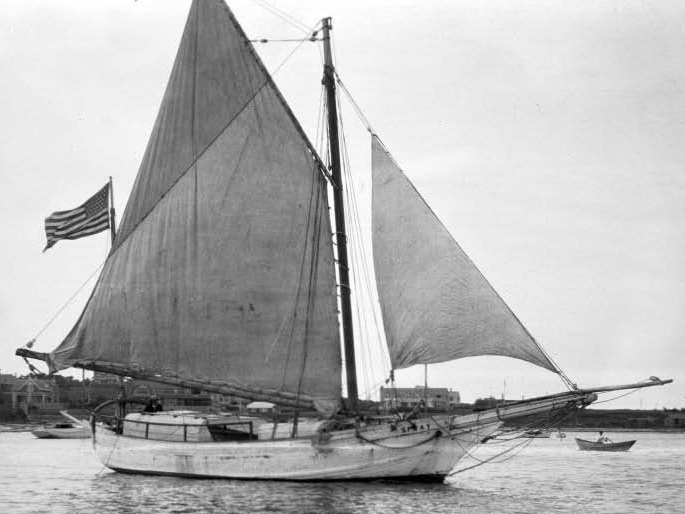
After an extended visit to his boyhood home at Brier Island and visiting old haunts on the coast of Nova Scotia, Slocum took his departure from North America at Sambro Island Lighthouse near Halifax, Nova Scotia on July 3, 1895.
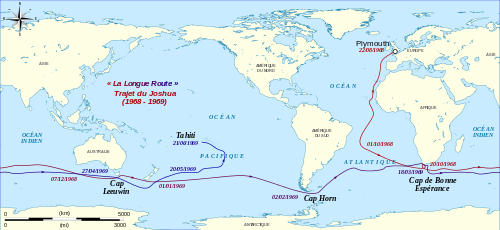
Slocum navigated without a chronometer, instead relying on the traditional method of dead reckoning for longitude, which required only a cheap tin clock for approximate time, and noon-sun sights for latitude. On one long passage in the Pacific, Slocum also famously shot a lunar distance observation, decades after these observations had ceased to be commonly employed, which allowed him to check his longitude independently. However, Slocum's primary method for finding longitude was still dead reckoning; he recorded only one lunar observation during the entire circumnavigation.
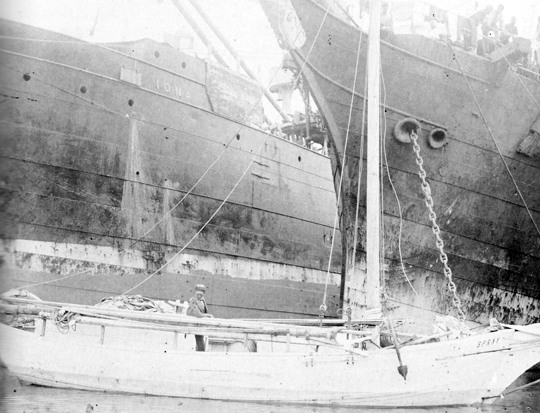
Slocum normally sailed the Spray without touching the helm. Due to the length of the sail plan relative to the hull, and the long keel, the Spray was capable of self-steering (unlike faster modern craft), and balanced stably on any course relative to the wind by adjusting or reefing the sails and by lashing the helm fast. He sailed 2,000 miles (3,200 km) west across the Pacific without once touching the helm.[12]

More than three years later, on June 27, 1898, he returned to Newport, Rhode Island, having circumnavigated the world, a distance of more than 46,000 miles (74,000 km). Slocum's return went almost unnoticed. The Spanish-American War which had begun two months earlier dominated the headlines. After the end of major hostilities, many American newspapers published articles describing Slocum's amazing adventure.
Sailing Alone Around the World
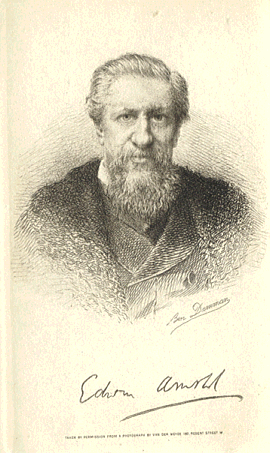
Slocum's book deal was an integral part of his journey: his publisher had provided Slocum with an extensive on-board library, and Slocum wrote several letters to his editor from distant points around the globe.
Slocum's Sailing Alone won him widespread fame in the English-speaking world. He was one of eight invited speakers at a dinner in honor of Mark Twain in December, 1900. Slocum hauled the Spray up the Erie Canal to Buffalo, New York for the Pan-American Exposition in the summer of 1901, and he was well compensated for participating in the fair.
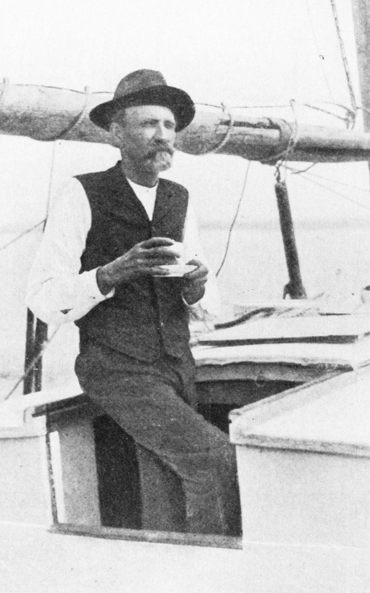
Later life
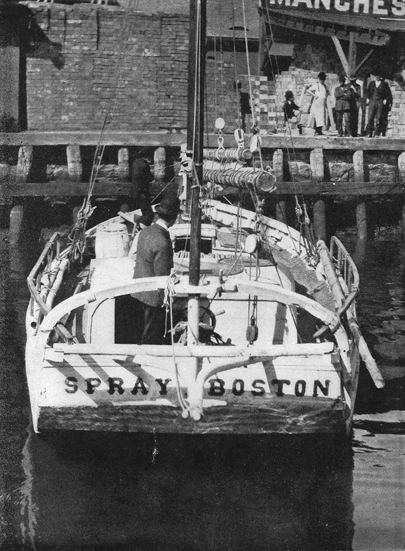
In 1901, Slocum's book revenues and income from public lectures provided him enough financial security to purchase a small farm in West Tisbury, on the island of Martha's Vineyard, in Massachusetts. After a year and a half, he found he could not adapt to a settled life and Slocum sailed the Spray from port to port in the northeastern US during the summer and the West Indies during the winter, lecturing and selling books wherever he could. Slocum spent little time with his wife on the Vineyard and preferred life aboard the Spray, usually wintering in the Caribbean.
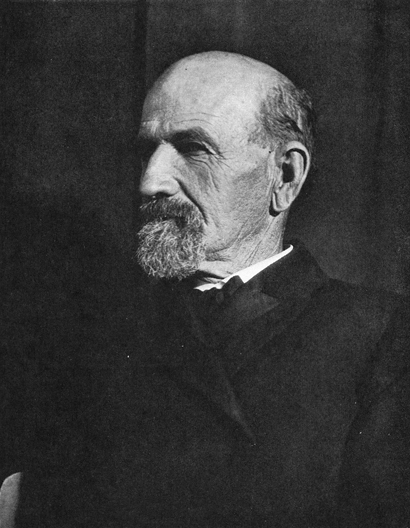
Slocum's mental health deteriorated during his later years. Visiting Riverton, New Jersey in May, 1906, Slocum was charged with raping a 12-year-old girl. After further investigation and questioning, it became apparent that the crime was indecent exposure, but Slocum claimed to have no memory of any wrong-doing and that, if anything had happened, it must have occurred during one of his mental lapses. Slocum spent 42 days in jail awaiting trial. At his trial he pleaded "no contest" and was released for time-served. The judge at his trial told him, "upon request of the family, I can deal leniently with you".[14]
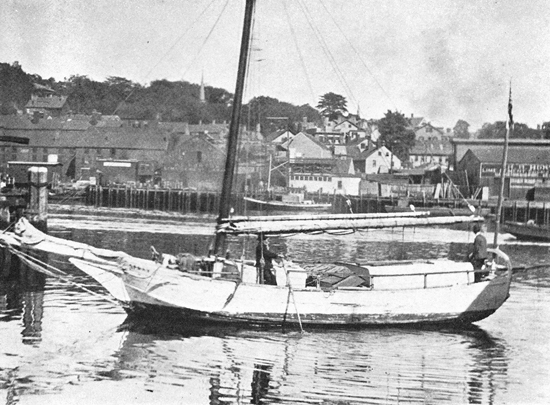
A few weeks after his conviction in New Jersey, Slocum and the Spray visited Sagamore Hill, the estate of US President Theodore Roosevelt on the north shore of Long Island, New York. Roosevelt and his family were interested in the tales of Slocum's solo circumnavigation. The President's young son, Archie, along with a guardian, spent the next few days sailing with Slocum up to Newport aboard the Spray, which, by then, was a decrepit, weather-worn vessel. Slocum again met with President Roosevelt in May 1907, this time at the White House in Washington. Supposedly, Roosevelt said to him, "Captain, our adventures have been a little different." Slocum answered, "That is true, Mr. President, but I see you got here first."[14]

By 1909, Slocum's funds were running low; book revenues had tailed off. He prepared to sell his farm on Martha's Vineyard and began to make plans for a new adventure in South America. He had hopes of another book deal.[14]
Disappearance
In November 1909, Slocum set sail for the West Indies on one of his usual winter voyages. He had also expressed interest in starting his next adventure, exploring the Orinoco, Rio Negro and Amazon Rivers.[12] Slocum was never heard from again. In July 1910, his wife informed the newspapers that she believed he was lost at sea.
At the time, most who knew Slocum believed that the Spray had been run down by a steamer or struck by a whale, the Spray being too sound a craft and Slocum too experienced a mariner for any other cause to be considered likely.[citation needed]
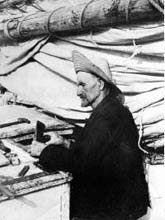
Years later, an analysis by Howard I. Chapelle, curator of maritime history at the Smithsonian Institution and a noted expert on small sailing-craft, demonstrated that the Spray was stable under most circumstances but could easily capsize if heeled beyond a relatively shallow angle. He felt that Slocum was merely lucky that his unstable vessel had not killed him earlier.[citation needed]
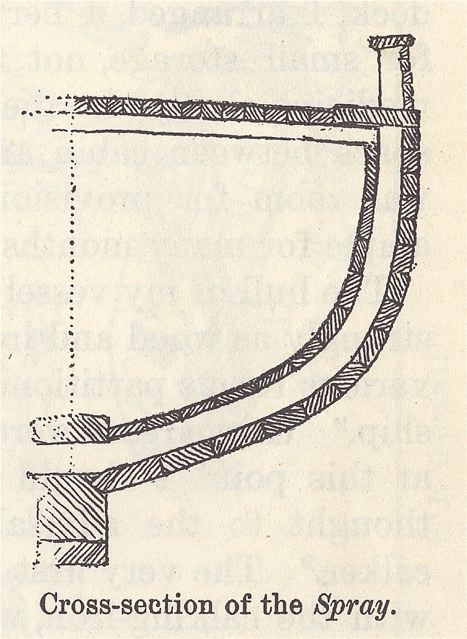
Despite being an experienced mariner, Slocum never learned to swim and considered learning to swim to be useless.

In 1924, Joshua Slocum was declared legally dead.[citation needed]
Legacy
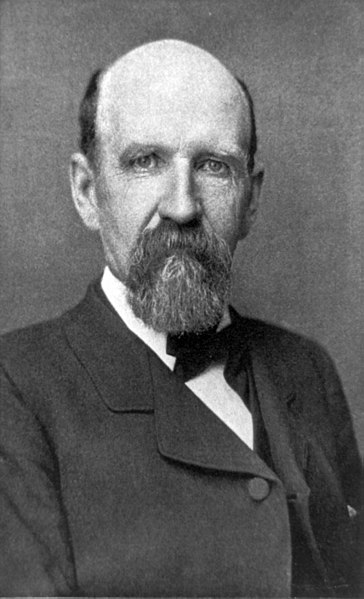
Joshua Slocum's achievements have been well publicised and honoured. The name Spray has become a choice for cruising yachts ever since the publication of Slocum's account of his circumnavigation. Over the years, many versions of Spray have been built from the plans in Slocum's book, more or less reconstructing the sloop with various degrees of success.

Similarly, the French long-distance sailor Bernard Moitessier christened his 39-foot (12 m) ketch-rigged boat Joshua in honor of Slocum. It was this boat that Moitessier sailed from Tahiti to France, and he also sailed Joshua in the 1968 Sunday Times Golden Globe Race around the world, making great time, only to abandon the race near the end and sail on to the Polynesian Islands.

Ferries named in Slocum's honour (Joshua Slocum and Spray) served the two Digby Neck runs in Nova Scotia between 1973 and 2004. [15] The Joshua Slocum was featured in the film version of Dolores Claiborne.[16]

An autonomous underwater vehicle (AUV), designed by the Scripps Institute of Oceanography, was named after Slocum's ship Spray. It became the first AUV to cross the Gulf Stream, while operated by the Woods Hole Oceanographic Institution.[17] Another AUV has been named after Slocum himself: the Slocum Electric Glider, designed by Douglas Webb of Webb Research (since 2008, Teledyne Webb Research). In 2009, a Slocum glider, modified by Rutgers University, crossed the Atlantic in 221 days.[18] The RU27 traveled from Tuckerton, New Jersey, to Baiona, Spain — the port where Christopher Columbus landed on his return from his first voyage to the New World.

A monument to Slocum exists on Brier Island, Nova Scotia, not far from his family's boot shop. Slocum is commemorated in museum exhibits at the New Bedford Whaling Museum in Massachusetts, the Maritime Museum of the Atlantic in Halifax, Nova Scotia, and the Mount Hanley Schoolhouse Museum near his birthplace. The sculptor Daniel Chester French created a memorial to Joshua Slocum in Forest Hills Cemetery in Jamaica Plain, Massachusetts; because he disappeared at sea, almost certainly, his remains are not at Forest Hills. Several biographies about Slocum are published.

The Slocum River in Dartmouth, Massachusetts was named for him, as was a newly discovered plant in Mauritius while he was there: Returning to the Spray by way of the great flower conservatory near Moka, the proprietor, having only that morning discovered a new and hardy plant, to my great honor named it "Slocum".[19] Slocum himself discovered an island by accident, and named it Alan Erric Island.[20]
References
- Berthold, Dennis A., ed. (2005). "Introduction". Sailing Alone Around the World. New York: Barnes & Noble. xiii–xxxvi. ISBN 978-1-59308-303-8
- Slocum, Joshua (2005) [1899]. Sailing Alone Around the World. New York: Barnes & Noble. ISBN 978-1-59308-303-8.
- Slocum, Joshua (1890) [1890]. Voyage of the Liberdade. Boston: Robinson & Stephenson.
- Slocum, Victor (2001) [1950]. Capt. Joshua Slocum: The Life and Voyages of America's Best Known Sailor. Dobbs Ferry, NY: Sheridan House. ISBN 0-924486-52-X.
- ^ Geoffrey Wolff, The Hard Way Around: The Passages of Joshua Slocum, p 8: spelling of family name given as "Slocombe".
- ^ Geoffrey Wolff, The Hard Way Around: The Passages of Joshua Slocum, p 11
- ^ Geoffrey Wolff, The Hard Way Around: The Passages of Joshua Slocum)
- ^ Geoffrey Wolff, The Hard Way Around: The Passages of Joshua Slocum, pgs. 70-75
- ^ Geoffrey Wolff, The Hard Way Around: The Passages of Joshua Slocum, pgs. 76-111
- ^ Berthold pg xix
- ^ a b Berthold pg xx
- ^ a b c d Slocum (1890), Voyage of the Liberdade
- ^ Victor Slocum (1950), p. 193
- ^ Cape Roman 33°3′48″N 79°20′43″W
- ^ Berthold pg xxi-xxii
- ^ a b c Slocum (1899), Sailing Alone Around the World
- ^ Arthur Ransome on Sailing Alone Around the World
- ^ a b c Teller, Walter Magnes (1971). Joshua Slocum. New Brunswick, N.J: Rutgers University Press. ISBN 0-8135-0700-6.
- ^ http://www.valleyweb.com/westport/tsdbrier.html
- ^ Newscotland1398.net
- ^ "Spray AUV". UC San Diego.
- ^ http://rucool.marine.rutgers.edu/atlantic/status_updates.html
- ^ Slocum, J (1899), Chapter XVII
- ^ Slocum, J (1899), chapter X
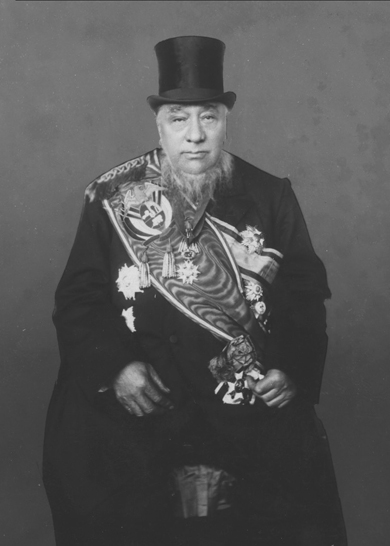
In
Pretoria, South Africa, Joshua Had a Chilly Meeting with South African
President Paul Kruger. President Kruger Believed that the World was
Flat and Couldn't be Sailed "Around."




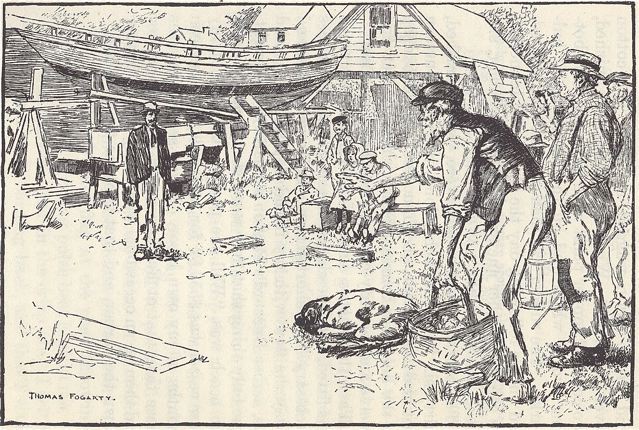

l like this , we have it, we can do it,we have the waterproof box ,weatherproof phone box and waterproof enclosure box.
ReplyDelete